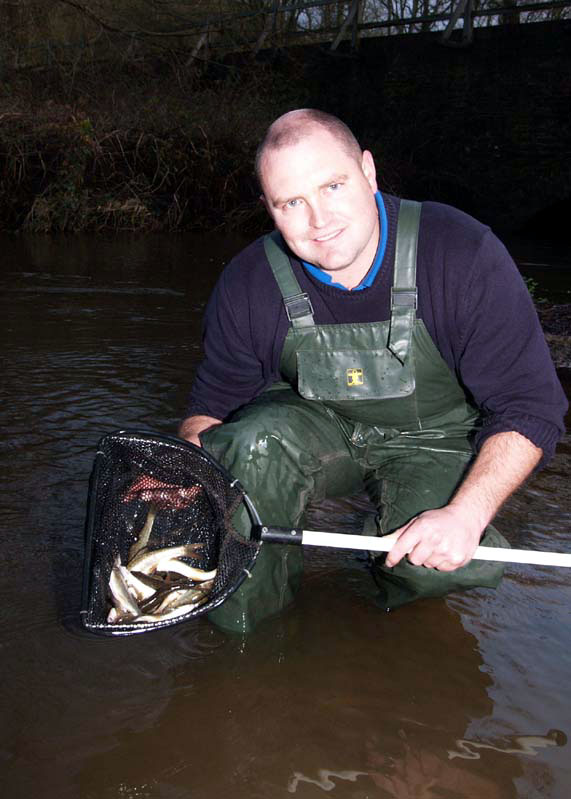Christmas came early on the River Wey this year as the Environment Agency delivered a stocking packed with 100 barbel yesterday (Wednesday).
The batch of 12-month-old fish were released at a site near Godalming in Surrey as part of an Environment Agency project to give the barbel population a boost.
Environment Agency fisheries officer Adrian Bicknell said: “The barbel stocking went really well yesterday and the fish seemed fine after a long day. We are working with Godalming Angling Society to restore the barbel population in this historically important section of the river.”
Malcolm Richardson, secretary of Godalming Angling Society said: “Our members are absolutely delighted with these healthy and fast growing young barbel. We are working with the Agency on plans for habitat enhancements that will boost barbel spawning and reduce the need for stocking in the future.”
The fish have been bred at the Environment Agency fish farm at Calverton, near Nottingham, which produced half a million fish last year.
Adrian added: “We’ll be following the progress of these young fish when we carry out our annual electric fishing surveys of the river at this site.”
Barbel, which can live up to 25 years, indicate high quality river habitat. However, the species faces many pressures to its survival in the River Wey. These include a lack of suitable spawning and juvenile habitats and impoundments, which is where the flow is reduced by structures on the river.
To spawn, barbel require shallow gravel areas with fast flows. Hatching larvae use still shallow bays, feed and avoid predators. As juveniles grow they use faster flows on shallow gravels. These habitats are necessary if larvae are to survive their first critical winter. In rivers without suitable spawning grounds nearby, adult barbel will migrate over 30 km to spawn.
The Environment Agency carries out more than 500 fish stockings transfers every year. Stocking of fish can bring socio-economic and conservation benefits to fisheries by increasing the numbers and species of fish available for capture, or by restoring stocks lost due to pollution or habitat degradation.
![]()






